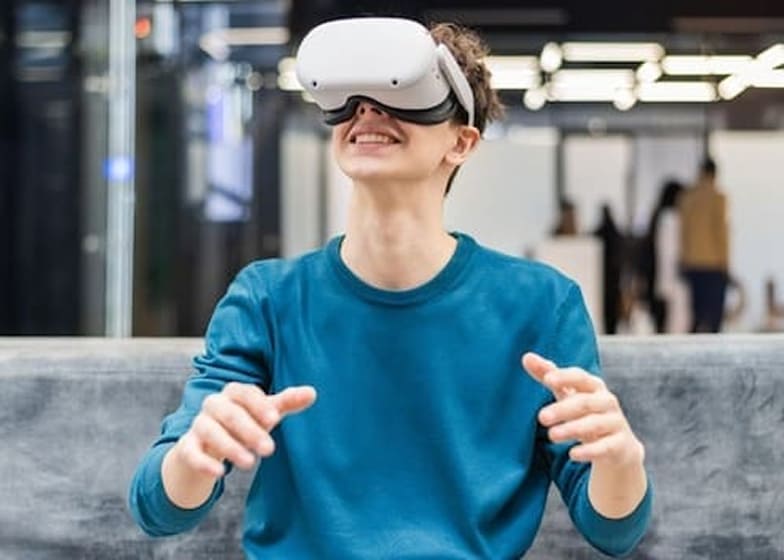5G, the fifth generation of mobile networks, is revolutionizing how people and businesses communicate by delivering ultra-fast internet speeds, low latency, and massive connectivity. Unlike previous generations, 5G is designed not just for faster browsing but to enable seamless communication between billions of devices simultaneously. This transformation makes it possible to support advanced technologies such as the Internet of Things (IoT), smart cities, autonomous vehicles, and augmented reality. For individuals, it means smoother video calls, faster downloads, and more reliable mobile experiences, while for businesses, it opens doors to entirely new ways of operating.
In the business landscape, 5G enables companies to innovate and streamline operations with real-time data transfer and automation. For example, manufacturers can use 5G-powered robotics and sensors for efficient production lines, while logistics companies can track goods instantly across global supply chains. Retailers benefit by offering immersive shopping experiences through augmented and virtual reality, and healthcare providers can implement remote surgeries or telemedicine with minimal delays. These capabilities help businesses not only cut costs but also unlock new revenue streams, creating opportunities for rapid growth.
Moreover, 5G is redefining customer expectations by offering instant, connected, and personalized experiences. Companies that adopt 5G early gain a competitive edge through improved responsiveness and customer engagement. From entertainment streaming to fintech solutions, 5G allows enterprises to deliver services with higher quality and reliability. The technology is also fostering innovation ecosystems, where startups and established companies collaborate to create solutions that were previously limited by connectivity constraints.
Ultimately, the adoption of 5G represents more than just a network upgrade—it is a business transformation catalyst. By enabling real-time communication, automation, and new digital services, 5G is paving the way for smarter businesses, more efficient industries, and enhanced consumer experiences. Organizations that leverage its potential early will not only boost productivity but also tap into lucrative markets across healthcare, retail, transportation, and beyond.
5G Technology
5G, or the fifth generation of wireless communication technology, is the latest evolution in mobile networking designed to provide faster, more reliable, and more efficient connectivity. Unlike its predecessors (3G and 4G), which focused primarily on improving internet speed for mobile users, 5G is built to power a fully connected digital world. It offers ultra-fast data transfer speeds, low latency (the delay between sending and receiving data), and the ability to connect millions of devices simultaneously. This makes it the backbone of innovations like the Internet of Things (IoT), smart cities, autonomous vehicles, and advanced healthcare solutions.
At its core, 5G uses a combination of high-frequency radio waves, massive MIMO (Multiple Input Multiple Output) antennas, and network slicing to deliver tailored connectivity for different applications. For example, in gaming or remote surgery, ultra-low latency is essential, while in manufacturing, massive device connectivity ensures efficient automation. These technical improvements make 5G not just a faster version of 4G but a transformative leap forward that enables real-time communication and advanced digital experiences.
For businesses and individuals, understanding 5G is crucial because it represents more than speed—it is about possibility. It empowers industries to embrace automation, improve customer experiences, and create innovative solutions. Whether it’s streaming ultra-HD content seamlessly, supporting connected devices in homes, or enabling mission-critical applications in enterprises, 5G is shaping the future of communication and business at an unprecedented scale.
Key Features
Ultra-Fast Speeds
5G offers data transfer rates up to 10 Gbps, nearly 100 times faster than 4G. This speed enables instant downloads, seamless video streaming, and real-time applications like AR/VR and cloud gaming.
Business Impact: : Companies can deliver high-quality digital services with minimal delays, creating new opportunities in entertainment, e-commerce, and education.
Earning Potential ($) : Businesses in AR/VR, gaming, and video streaming powered by 5G can generate $50B+ annually worldwide.
Low Latency
Latency in 5G can be as low as 1 millisecond, compared to 30–50 ms in 4G. This ultra-low delay is critical for real-time operations like remote surgeries, autonomous vehicles, and smart factories.
Business Impact: : Healthcare, manufacturing, and transport sectors benefit from precise, real-time decision-making, improving safety and efficiency.
Earning Potential ($) :5G-driven healthcare solutions alone are projected to earn $40B+ by 2030.
Massive Device Connectivity (IoT Integration)
5G can connect up to 1 million devices per square kilometer, supporting the explosion of IoT (Internet of Things) devices.
Business Impact: : Enables smart homes, smart cities, industrial automation, and large-scale sensor networks for logistics and agriculture.
Earning Potential ($) : IoT powered by 5G could unlock a market worth $1.1 Trillion by 2030.
Enhanced Reliability and Stability
5G networks are designed for consistent, stable connections with minimal downtime, making them suitable for mission-critical operations.
Business Impact: : Industries like finance, defense, and transportation can run operations with higher reliability, avoiding costly interruptions.
Earning Potential ($) : Reliable 5G networks could save industries millions annually by reducing downtime and operational risks.
Network Slicing
5G allows the creation of multiple virtual networks on a single physical infrastructure, each customized for specific needs (e.g., gaming, healthcare, manufacturing).
Business Impact: : Businesses can access dedicated, optimized connectivity, improving performance and security for specialized applications.
Earning Potential ($) :Telecom providers can earn $20B+ annually from offering customized 5G slices to enterprises.
Improved Spectrum Efficiency
5G uses advanced spectrum technologies such as massive MIMO and millimeter waves, maximizing data transfer without congestion.
Business Impact: : Cities and large organizations benefit from uninterrupted connectivity even in crowded environments.
Earning Potential ($) : Smart city projects using 5G could drive markets worth $500B+ by 2030.
Impact of 5G on Communication and Business
Revolutionizing Mobile Communication
With ultra-fast speeds and low latency, 5G eliminates delays in video calls, file sharing, and online collaboration. This improves both personal communication and enterprise-level interactions, ensuring smooth, uninterrupted connectivity.
Business Impact: Global teams can collaborate more effectively, reducing costs associated with travel and downtime.
Earning Potential ($) Companies adopting 5G communication tools could save $100K+ annually in operational costs.
Boosting IoT and Smart Device Integration
5G can connect 1 million+ devices per square km, making it the backbone of IoT (smart homes, smart cities, connected cars, industrial sensors). This enables seamless communication not only between people but also between devices.
Business Impact:Businesses gain access to real-time insights, predictive maintenance, and automation on a massive scale.
Earning Potential ($)5G-powered IoT market projected to reach $1.1 Trillion by 2030.
Transforming Industries with Real-Time Solutions
Industries like healthcare, manufacturing, and logistics benefit from real-time communication and automation enabled by 5G. Examples include remote surgeries, autonomous vehicles, and instant supply chain tracking.
Business Impact: Companies achieve higher efficiency, fewer errors, and faster response times, leading to better customer satisfaction.
Earning Potential ($) AI + 5G in healthcare alone could unlock $40B+ annually by 2030.
Enhancing Customer Experience
5G allows businesses to deliver personalized, instant, and high-quality services such as AR/VR shopping, ultra-HD streaming, and immersive entertainment.
Business Impact:Stronger customer engagement leads to higher loyalty and increased revenue opportunities.
Earning Potential ($)5G-driven AR/VR in retail expected to generate $50B+ by 2030.
Remote Work and Collaboration Growth
With reliable, high-speed connections, businesses can expand remote work, virtual meetings, and cloud collaboration without disruptions.
Business Impact:Companies can reduce overheads, hire global talent, and improve productivity.
Earning Potential ($)Remote collaboration tools powered by 5G forecasted to drive $20B+ in SaaS revenue by 2028.
Empowering Autonomous Systems and Smart Infrastructure
5G supports autonomous vehicles, drones, and smart city infrastructure with precise, real-time data transfer. This revolutionizes transportation, logistics, and urban planning.
Business Impact:Businesses can offer faster deliveries, optimize logistics, and governments can manage cities more efficiently.
Earning Potential ($)Autonomous systems with 5G integration projected to create $100B+ global market.
Challenges
High Infrastructure Costs
Deploying 5G requires a huge investment in towers, small cells, and fiber optic networks. Unlike 4G, 5G needs denser infrastructure to deliver faster speeds and low latency, making rollout expensive for telecom providers.
Limited Coverage
5G networks are still concentrated in urban areas, while rural and remote regions lack proper access. This gap limits the widespread adoption of 5G and restricts benefits for industries operating outside cities.
Device Compatibility
Most existing smartphones, IoT devices, and machines are not 5G-enabled. Businesses and consumers need to upgrade devices, which adds additional cost and slows adoption.
Cybersecurity and Privacy Risks
With billions of connected devices, 5G increases the attack surface for hackers. Ensuring data security, network integrity, and user privacy is a major challenge.
Regulatory and Standardization Issues
Different countries follow different policies for spectrum allocation and security standards. Lack of global consistency creates delays and increases costs for businesses working across multiple markets.
Public Health and Environmental Concerns
Some communities express concern about radiation exposure and the environmental impact of mass production of 5G devices. Even if not scientifically proven, such concerns can delay rollout due to public resistance.
Shortage of Skilled Professionals
5G requires expertise in advanced networking, IoT, and cybersecurity. The shortage of skilled engineers and technicians makes deployment and integration challenging for many businesses.
Summary
5G technology is revolutionizing the way people and businesses communicate by offering ultra-fast speeds, lower latency, and massive connectivity. It enables industries like healthcare, manufacturing, retail, and logistics to adopt smart solutions such as remote surgeries, autonomous vehicles, IoT integration, and real-time data processing. While its benefits promise enhanced efficiency, innovation, and economic growth, challenges like high infrastructure costs, limited coverage, device upgrades, and cybersecurity concerns slow down its adoption. Overall, 5G stands as a game-changer that is reshaping digital transformation and unlocking new opportunities for businesses worldwide.
















